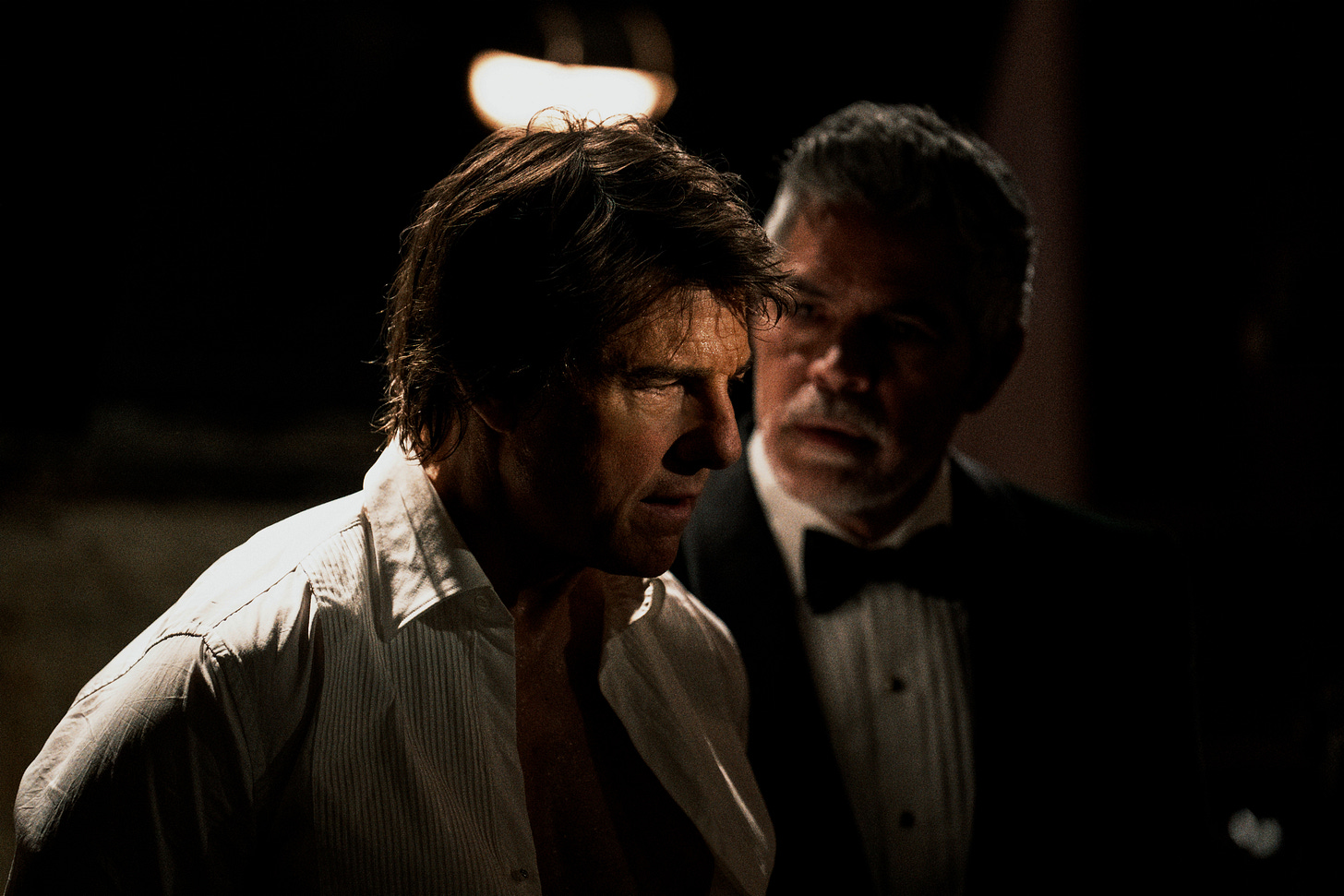Mission: Impossible—The Final Reckoning
This message self-destructs not with a bang but with a whimper.

Early in Mission: Impossible—The Final Reckoning, Tom Cruise’s Ethan Hunt utters the phrase, “For those we love and those we never meet.” The line is lifted from the oath that agents take when they agree to join the Impossible Mission Force. It’s a little poetic and wordy, repeated with gravity, as though it were a callback to the rest of the series. The trouble is that the line first appeared in The Final Reckoning’s immediate predecessor, Mission: Impossible—Dead Reckoning, Part One. (The reasons for dropping the “Part Two” from this new movie’s title are no doubt just as baroque and forgettable as the average Mission: Impossible plot.) It’s a piece of self-mythologizing that runs hand in hand with the energy of late-career Tom Cruise, who in his early sixties keeps falling and getting back up and undertaking remarkable stunt work simply to prove that he can go further and faster than most other movie stars half his age. Things have always been this way, the line says; the IMF has always worked in the shadows to save the world out of pure altruism. Ethan Hunt will single-handedly save the world, just as Tom Cruise will single-handedly save blockbuster movies.
That’s a lot of weight to place on the shoulders of a franchise that, at its best, skips along with a light touch. The Mission: Impossible movies are built by design to string together stunts; the connective tissue of the rest of the script is written on the fly during downtime between shooting setpieces. In earlier installments, it’s easy to skip past the plot machinations because they’re breezy. The Final Reckoning front-loads all its talk, making the already-dense plotting impossible to get past, let alone ignore. It’s as though the series is trying to balance the scales between its substantial stunt work and its desire to be taken seriously. The thumb on the scale only betrays the fact that the Mission: Impossible movies have always been silly. Any retroactive self-mythologizing only makes it more so.
The plot still doesn’t matter here, even though it’s the primary focus of the movie. Ethan Hunt and company must chase down the MacGuffin that will help them destroy the Entity, an artificial intelligence that first made itself known in Dead Reckoning. In the intervening time between installments, Ethan has once again gone on the run from his own agency, and the Entity has infected the internet. Artificial intelligence threatens to destroy humanity at mass scale. The AI’s motivations aren’t really important; The Final Reckoning simply gestures toward living in a post-truth world without stopping to interrogate that idea. The movie’s incuriosity about its own antagonist is a wasted opportunity, given that one of the consistent running gags in the franchise’s thirty-year history is a character revealing their identity by pulling a rubber mask off their true face.
Despite all dialogue to the contrary, we’ve been here before: the world has always been about to end, and only the IMF can stop it. Earlier entries in the series, such as Ghost Protocol,a play with perception and deception better than The Final Reckoning ever does; the earlier movie even puts a button on it with a gadget (used to infiltrate the Kremlin!) that tracks a person’s eye movements and projects a false view tailored to their point of view. The Final Reckoning isn’t interested in anyone’s perspective, unless it’s about how great Tom Cruise is at saving the world.
When The Final Reckoning stops trying to be the capstone of an action series and finally gets to the action, it has its moments. An extended stunt involving a pair of biplanes goes to great lengths to demonstrate that Cruise himself is wing-walking, his hair and face pushed back by the wind. The film features a few homages to The Hunt for Red October, including Tramell Tillman as a soft-spoken submarine captain getting to chew on some delicious line deliveries. Pom Klementieff is perhaps the most arresting player in the movie’s fight scenes, and I’d love to see her lead her own action movie someday.
These dalliances aside, though, The Final Reckoning can’t stay away from its central character for very long. Tom Cruise can be compelling when he wants to be, but he seems lost here: a lot of steely determination caught in an imbalance of ponderous dialogue and two major setpieces, the aforementioned airplane stunt and an extended sequence deep underwater. In both scenes, he’s alone with no communications, isolated from the rest of the world. The underwater sequence feels unmoored from any other death-defying stunts in the series, and while it’s an impressive piece of special-effects work, it lacks the gravity of most other Mission: Impossible stunts, just a hair unbelievable enough to push the film into science fiction territory. In the scene, Cruise wears a high-tech wetsuit, a piece of protective gear that’s supposed to make the events seem plausible, but instead it recalls Sean Connery at the opening of Goldfinger, emerging from the water wearing a scuba suit and a fake seagull on his head. Both movies are silly, but only The Final Reckoning fails to recognize its silliness for what it is.—Sarah Welch-Larson
★☆☆☆
Mission: Impossible—The Final Reckoning is in theaters nationwide now.





https://substack.com/@egretlane/note/p-164695987?r=5ezmlv&utm_medium=ios&utm_source=notes-share-action